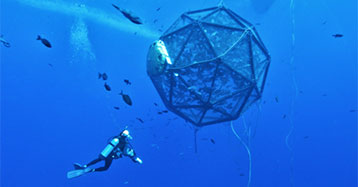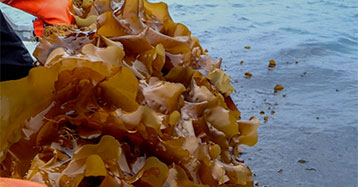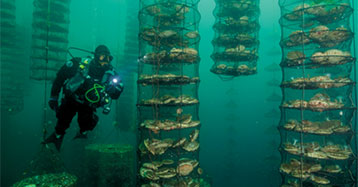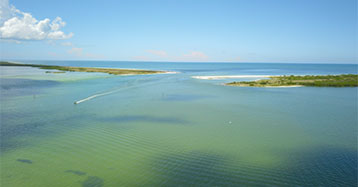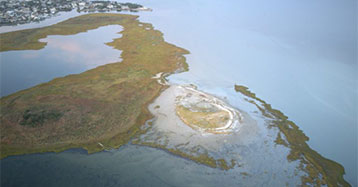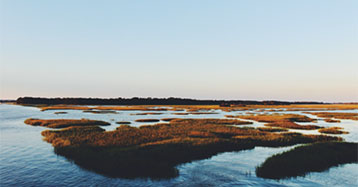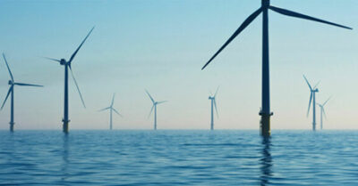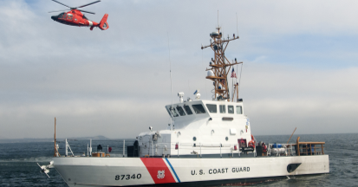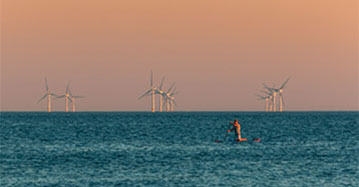Blue Economy Support
Ocean and coastal science empowers innovation and sustains growth of U.S. ocean industries. Exploring and understanding ocean neighborhoods, including the ocean floor, habitats, chemistry, and other uses, is critical to planning for industry use. NCCOS provides coastal and marine planning guidance for ocean industries by characterizing the conditions of coastal environments and locations of human use activities using best available data from authoritative sources. This enables ocean industries, regulators, and conservationists to make informed ocean and coastal planning decisions to enhance the Blue Economy.
What is the New Blue Economy?

The blue economy accounts for goods and services dependent on the ocean and coastal waters of the United States. The New Blue Economy pushes that a step further, making strong connections between marine waters, their economic benefits, and coastal communities that rely on them. NOAA is committed to gathering the best available ocean data and using it to address societal challenges and inspire solutions.
Offshore Wind Energy
The quest for renewable energy has precipitated a global effort to harness the power of wind, including in the United States. The U.S. is one of the largest and fastest growing wind markets in the world. Today, the U.S. is investing in wind research and development projects, both on land and offshore, to reduce greenhouse gasses, advance technology innovations, create job opportunities, and boost economic growth. NCCOS is empowering renewable energy development by providing state of the art research, assessment, and planning tools. Much of this work is accomplished in cooperation with the Department of Interior’s Bureau of Ocean Energy Management (BOEM) and the Department of Energy. Our services focus on supporting renewable ocean energy planning and associated ecological assessments for current and future ocean energy development.

U.S. Offshore Wind Energy Planning May Not Be Engaging All Coastal Residents
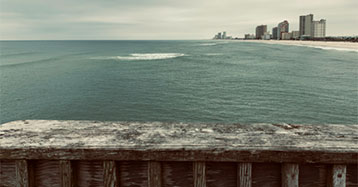
Finding the right space for wind energy in the Gulf of Mexico: Spatial sustainability modeling to inform Wind Energy Areas and beyond
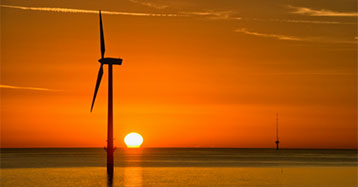
OCEAN REPORTS: An analysis tool to support ocean commerce, energy development, and conservation
Aquaculture
Eighty-five percent of seafood consumed in the United States is imported, resulting in a $14 billion trade deficit, food insecurity, and missed economic opportunities. For many coastal communities, aquaculture promises economic development, revitalization of working waterfronts, and a more resilient coastal landscape. With an immense exclusive economic zone, U.S. coastal resources are vast and capable of providing environmentally sustainable seafood to meet growing U.S. and global demand. Coastal managers, planners, and the aquaculture industry need NCCOS’s innovative science. Predictive models, data sets, maps, tools, and targeted research are defining and informing sustainable aquaculture development along every coastline of the nation. NOAA, the aquaculture industry, and coastal communities are working together to maintain healthy resilient coastal ecosystems to cultivate a sustainable aquaculture economy.
Dredging and Mining
To enhance coastal resilience, scientists and resource managers are employing coastal engineering strategies like beach nourishment, barrier island restoration, and wetland restoration to protect communities from storms, erosion, and sea level rise. These types of projects have led to an increase in the demand for offshore marine sands. Dredging of sand shoals is the most efficient method to obtain marine sands, however little is known about sand shoal habitat value to commercially and ecologically important fish populations. Furthermore, navigation channels across the country require regular maintenance dredging to avoid infilling with sediments and becoming impassable. In an experimental strategy that is often referred to as “beneficial use”, sediments removed during maintenance dredging operations can be used to support the creation and enhancement of local coastal habitats, making these systems more resilient to erosion and sea level rise.
Our Partnerships
In addition to working with other NOAA offices, we partner with federal, state, and local agencies and many other organizations to ensure we use the most relevant and updated information and data in our products. Below are a few of our collaborative partners.

